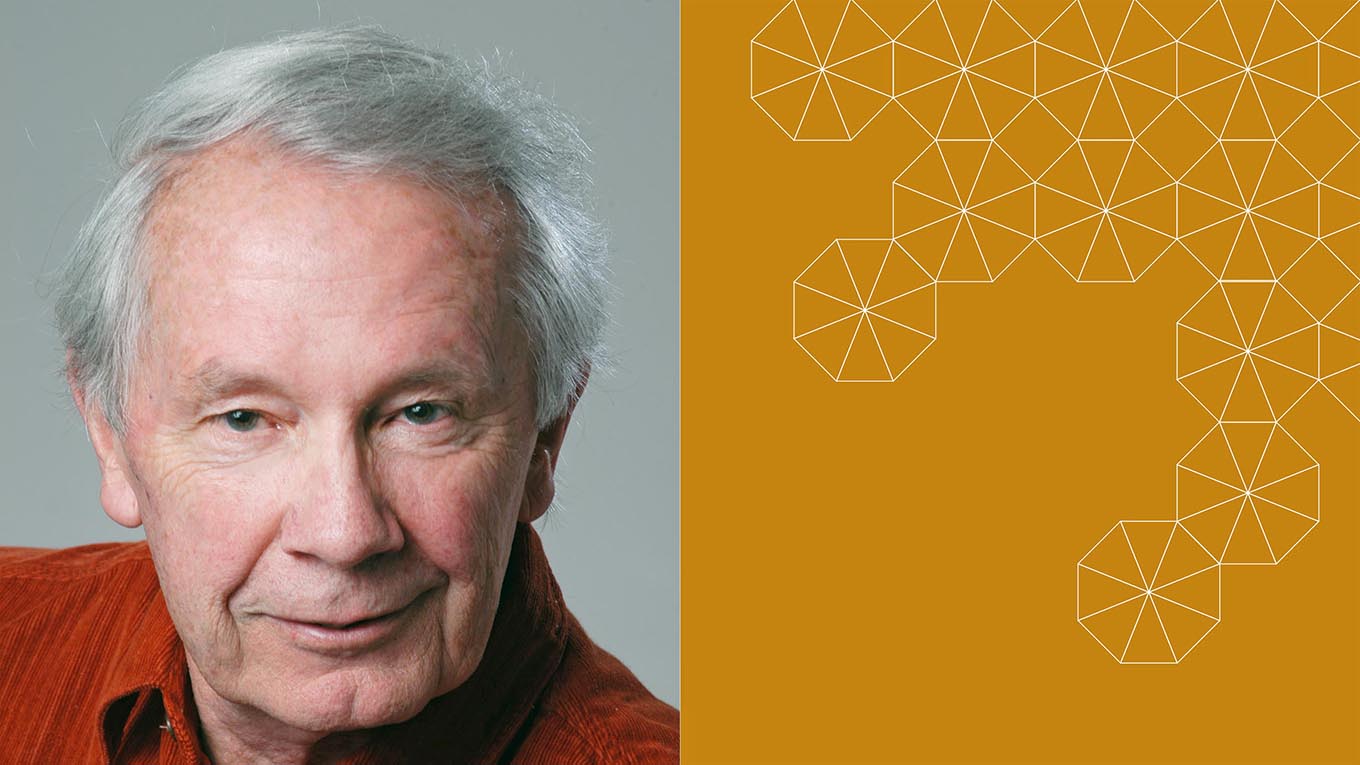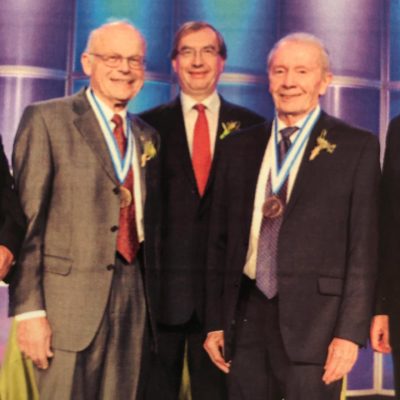 Richard White, professor of electrical engineering and computer sciences.
Richard White, professor of electrical engineering and computer sciences.Richard White, pioneer in ultrasonics and micro-electromechanical systems, dies at 90
Richard White, a professor emeritus at the University of California, Berkeley, and an eminent researcher who made seminal contributions in the field of micro-electromechanical systems, died Friday, Aug. 14, due to complications from injuries related to a fall. White was 90 when he died at his Berkeley home, surrounded by family.
A prolific researcher, publisher and inventor, White authored and co‐authored more than 90 research papers, co‐authored two books and filed many patent applications. He is most recognized for his work on acoustic properties at the micro-scale, which contributed to the development of ever-smaller sensors and semiconductors.
White invented the interdigital transducer, a structure that exploits the way surface waves stimulate electrons in a material, feeding energy to each other. Interdigital transducers are a critical component in devices that use surface acoustic waves to generate electric signals. The technology is found in billions of devices worldwide, such as cell phones and television monitors, and is used to help measure the quality of steel and conduct tests on fighter aircraft.
In a 2007 oral history interview, White described how surface acoustic wave filters allowed electronics to move away from bulky capacitors that were difficult to fabricate. Moreover, the small, 2D structure of acoustic wave filters made them amenable to mass production.
White’s research on surface acoustic waves and interdigital transducers was recognized with the Rayleigh Award in 2003 from the IEEE’s Ultrasonics, Ferroelectrics and Frequency Control Society.
Richard (Dick) M. White was born in Denver, Colorado, on April 25, 1930. He was an only child, raised in the midst of the Great Depression. His strong academic record earned him a Pepsi Scholarship, which paid for his college tuition at Harvard University. At Harvard, White got his bachelor’s and master’s degrees in engineering science and applied physics in 1951 and 1952, respectively, and his Ph.D. in applied physics in 1956.
Soon after graduating, White worked as a research scientist in the microwave division at the General Electric Research Laboratory in Palo Alto, Calif., where he garnered attention for his work on the photoacoustic effect, in which a sound wave is generated by the transient absorption of light energy at the surface of a material. The phenomenon was originally demonstrated by Alexander Graham Bell in 1880, but practical applications did not emerge until there were better advances in sensors in light source technologies.
In 1962, White joined UC Berkeley as a faculty member in the Department of Electrical Engineering. There, he helped develop a model for self-paced courses for computer programming students, and he co-founded the Graduate Group in Science and Mathematics Education (SESAME), which was later absorbed into the School of Education.
One of White’s most prominent contributions at UC Berkeley may be the Berkeley Sensor & Actuator Center (BSAC), which he and fellow engineering professor Richard Muller established in 1986 with support from the National Science Foundation. BSAC used a model of close collaboration with industry and government agencies that has proven highly effective to this day.
By the 1980s, the success of silicon integrated circuits had ignited enthusiasm for researchers to produce engineering microsystems that would sense, measure and control non-electronic signals. The physics of piezoelectricity was one important key in how to do this — and practical engineering in piezoelectricity formed an initial bond between White and Muller. The success of the research that followed propelled BSAC to become a significant microsystem contributor on an international scale.

Richard White (far right) pictured with Richard S. Muller (far left) and William Duncan of the Royal Scientific Society of Edinburgh after their acceptance of the 2013 Maxwell Awards. (Image courtesy of Richard Muller)
“BSAC helped launch the field of micro-electromechanical systems, and it is one of the key innovations that has made our department famous,” said Jeffrey Bokor, the Paul Gray Distinguished Professor of Engineering and chair of the EECS department.
White and Muller were awarded the 2013 IEEE/Royal Society of Edinburgh James Clerk Maxwell Medal for their groundbreaking work in micro-electromechanical systems technology. BSAC is now directed by 12 faculty members who guide research projects conducted by more than 100 graduate students.
White’s later research expanded into laser ultrasonics and Lamb wave acoustic sensors. Even after he retired in 2006, he remained active in research as a Professor of the Graduate School, a designation that allowed him to advise graduate students. He was particularly interested in possible applications when micro-sensors were embedded in mobile phones. The sensors could be used to measure air pollution, and the resulting data could be collected to create a geographical map of hazardous zones. He was also involved in a project to detect gas stations that leak hydrocarbons from underground tanks, and weeks before his accident, he had been working actively developing a new sensor for COVID-19.
“Dick was a guiding light in so many ways,” said Michel Maharbiz, a professor of electrical engineering and computer sciences who said that White’s enthusiasm was one of the reasons he decided to join the UC Berkeley faculty. “He was one of those lucky few who continue to enjoy a productive intellectual life long after most have retired. He always seemed to me to retain that mischievous spark of youth that spoke of an active mind, eager for new fun.”
White earned numerous honors over the course of his career. He was a member of the National Academy of Engineering, a Fellow of the American Association for the Advancement of Science and a Fellow of IEEE. He received a Guggenheim Fellowship in 1968, and he also received the IEEE’s Cledo Brunetti Award.
Among White’s non-academic pursuits was a passion for running and singing. White was a much-loved member of the UC Monks singing group and sang at the Faculty Club for their holiday party for more than 50 years.
White is survived by two sons, Brendan and Rolland, both of Portland, Ore., and four grandchildren.
